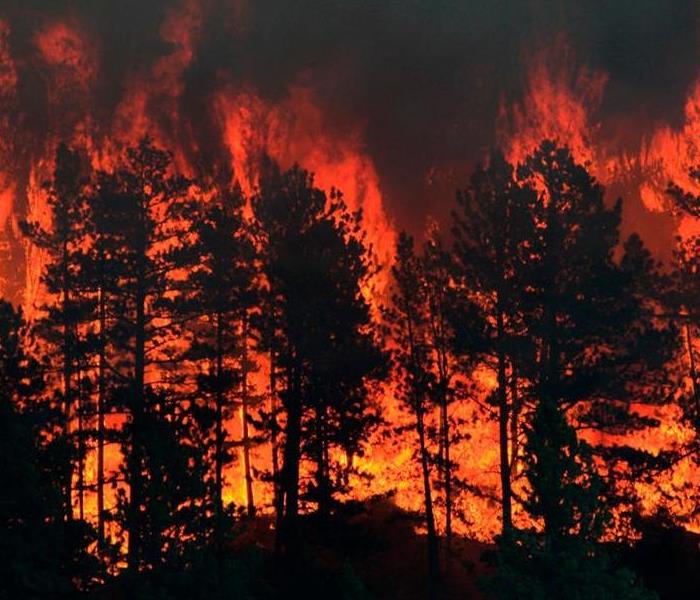Wildfire Preparedness
1/2/2018 (Permalink)
What
A wildfire is an unplanned, unwanted fire burning in a natural area, such as a forest, grassland, or prairie. As building development expands into these areas, homes and businesses may be situated in or near areas susceptible to wildfires. This is called the wildland urban interface.
Wildfires can cause death or injury to people and animals, damage or destroy structures, and disrupt community services including transportation, gas, power, communications, and other services. The impact may cover large areas with extensive burning, embers traveling more than a mile away from the wildfire itself, and smoke causing health issues for people far away from the fire. Wildfires damage watersheds leave areas prone to flooding and mudslides for many years.
When
Wildfires can occur at any time throughout the year, but the potential is always higher during periods with little or no rainfall, which make brush, grass, and trees dry and burn more easily. High winds can also contribute to spreading the fire. Your community may have a designated wildfire season when the risk is particularly high.
Before
Make a Wildfire plan
Know your wildfire risk.
- Familiarize yourself with local emergency plans. Know where to go and how to get there should you need to evacuate.
- Make a wildfire emergency plan including an evacuation plan and a communication plan.
- Many communities have text or email alerting systems for emergency notifications. To find out what alerts are available in your area, search the Internet with your town, city, or county name and the word “alerts.”
- Build or restock your emergency preparedness kit, including a flashlight, batteries, cash, and first aid supplies.
- Stay tuned to your phone alerts, TV, or radio, for weather updates, emergency instructions or evacuation orders.
After
Returning Home
Return home only when authorities say it is safe.
For several hours after the fire, maintain a "fire watch." Check and re-check for smoke, sparks or hidden embers throughout the house, including the roof and the attic.
- Use caution when entering burned areas as hazards may still exist, including hot spots, which can flare up without warning. Evacuate immediately if you smell smoke.
Cleaning Your Home
Wear a NIOSH certified-respirator (dust mask) and wet debris down to minimize breathing dust particles.
Discard any food that has been exposed to heat, smoke or soot.
Do NOT use water that you think may be contaminated to wash dishes, brush teeth, prepare food, wash hands, or to make ice or baby formula.
- Photograph damage to your property for insurance purposes.
Here are some more information about wildfires form ready.gov.






 24/7 Emergency Service
24/7 Emergency Service
